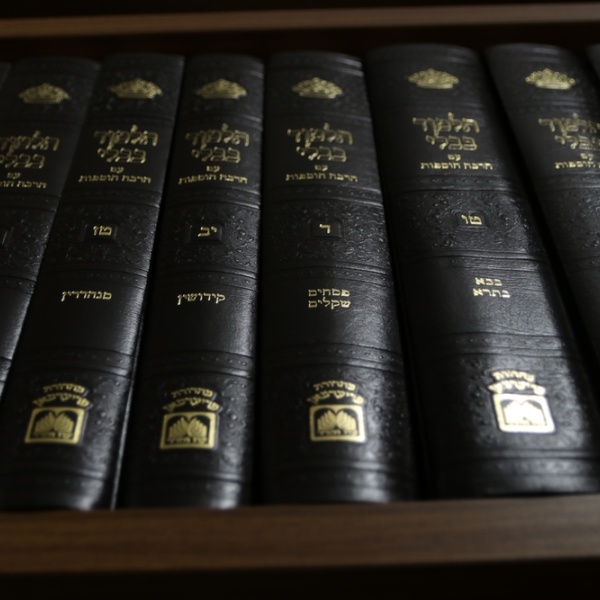
“Until when must he declare the lost object? Until his neighbours know about it, these are the words of Rav Meir.” (Bava Metzia 28a)
One who finds a lost object that is both identifiable and has some value must declare his finding in the hope of being able to return it. In an era with no email, social media or even printing, letting people know you had found a lost object was not an easy matter. Rav Meir argues that one’s obligation to seek the owner is limited in scope. One is not obligated to search for the owner beyond one’s immediate surroundings and if there are no claimants in the neigbourhood one may then keep the object.
Rabbi Yehuda disagrees requiring one to put in more time and effort. “The three pilgrim festivals and after the last festival, seven days[1].” With Jews required to come to Jerusalem for Pesach, Shavuot and Sukkot one must announce his find at the Temple and then wait seven days so that “they may travel to their house for three days, travel back for three days and one day to announce” and check to see what objects may have been lost.
The Beit HaMikdash was not only a “house of prayer for all the nations” but served as the largest lost and found. Beyond the practical benefits of having this central gathering place serve as a lost and found it fulfilled a central teaching of Judaism, that worship of G-d and helping our fellow man go hand in hand[2].
While the concept of the Beit HaMikdash serving as a place of hashavat aveidah is a beautiful one, the Gemara questions the specific details. Just a few days ago shuls around the world recited the prayer for rain, as Sukkot marks the beginning of the rainy season in Israel. While we acknowledge G-d’s power in bringing the rains by beginning to say masheev haruach umoreed hageshem on Shmini Atzeret we do not actually begin asking for rain until 15 days later on the 7th of Cheshvan[3]. This is not because we don’t need rain until then, rather it is to allow the last of the pilgrims who came to Jerusalem to get home – and for some that was a 15-day journey. To ask people to come to Jerusalem and then pray for rain as these visitors are travelling home would display a great lack of sensitivity. If such is the case, the Gemara queries, why do we allow only seven days to claim a lost object?
Rav Yosef explains that the length of time required to wait for the owner to claim his loss is a function of historical factors. During the first Temple period where the vast majority of Jews lived in Israel and many many thousands came to Jerusalem from all over the land a 15-day journey home was the norm for many. However during the second Temple period when very few people actually came to Jerusalem (or even lived in Israel) very few if any lived so far away and three days was sufficient.
Abaye uses those same historic facts to reach the exact opposite conclusion. Because there were so many people travelling during the first Temple period transportation was much more efficient, with better roads, and caravans travelling day and night. Hence one could reach anywhere in the land within three days. But with so few people during the second Temple travel was more difficult and even dangerous and it would take much longer to reach hone.
Rava prefers a more conceptual approach, and posits a fundamental difference between the two cases. The prayer for rain can wait 15 days but requiring the finder to remain for 30 days (15 there and 15 back) is too much to ask of one trying to fulfill the mitzva of returning a lost object. “The rabbis did not burden one with a lost object too much[4].”
We have not had a Temple for over 1,900 years and Rav Yosef, Abaye and Rava lived hundreds of years after the destruction and hundreds of miles away from Jerusalem. But like many a discussion of the Rabbis that focused on theory it was theory they hoped would soon turn into practice. “Initially, whoever found a lost article used to proclaim it during the three Festivals and an additional seven days after the last Festival...after the destruction of the Temple — may it be speedily rebuilt in our own days! — it was enacted that the proclamation should be made in the synagogues and study halls.” (Bava Metzia 28b).
The synagogue replaced the Temple - more than just in prayer.
[1] While the technical obligation of aliyah leregel may have applied to each one of the shalosh regalim it was the rare Jew who did so three times a year. The Mishna takes it as a given that many Jews will come to Jerusalem only once a year – hence the obligation to declare the lost item for three consecutive festivals.
[2] This is perhaps the opening message of the Torah which details the process leading to the creation of man – created in G-d’s image. Our relationship to G-d must reflect that to man and vice versa.
[3] Those living outside of Israel begin December 5, which marked the rainy season in Bavel. Why we don’t pray for rain based on local needs is not fully clear – and was the subject of much debate and is beyond the scope of this devar Torah.
[4] For similar reasons one who returns a lost object is not required to take an oath that he is returning it whole. For example if one returns a lost wallet there is no need to take an oath that he did not take any of the money that may have been inside. Make a mitzva too difficult and people won’t observe it.
